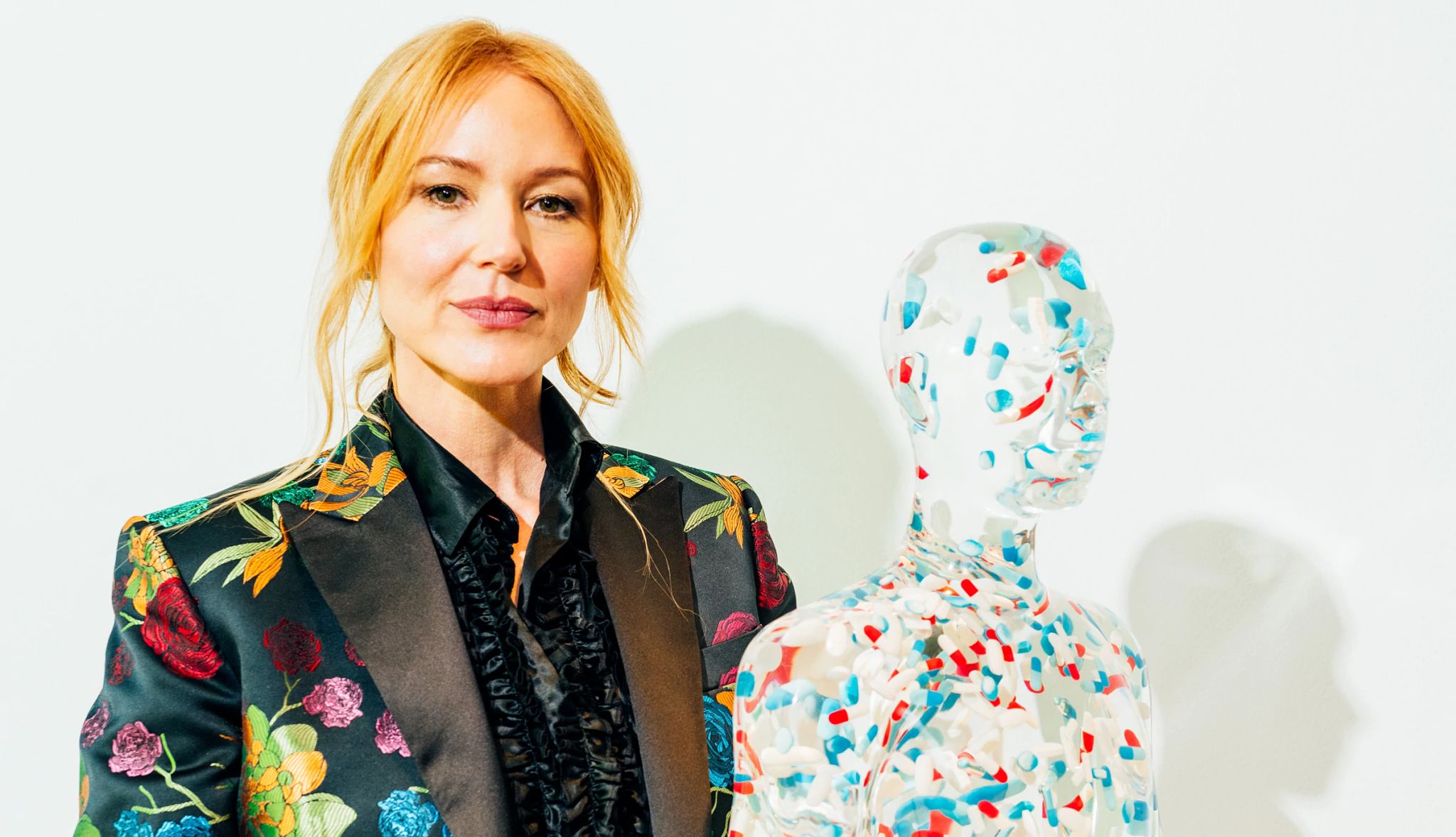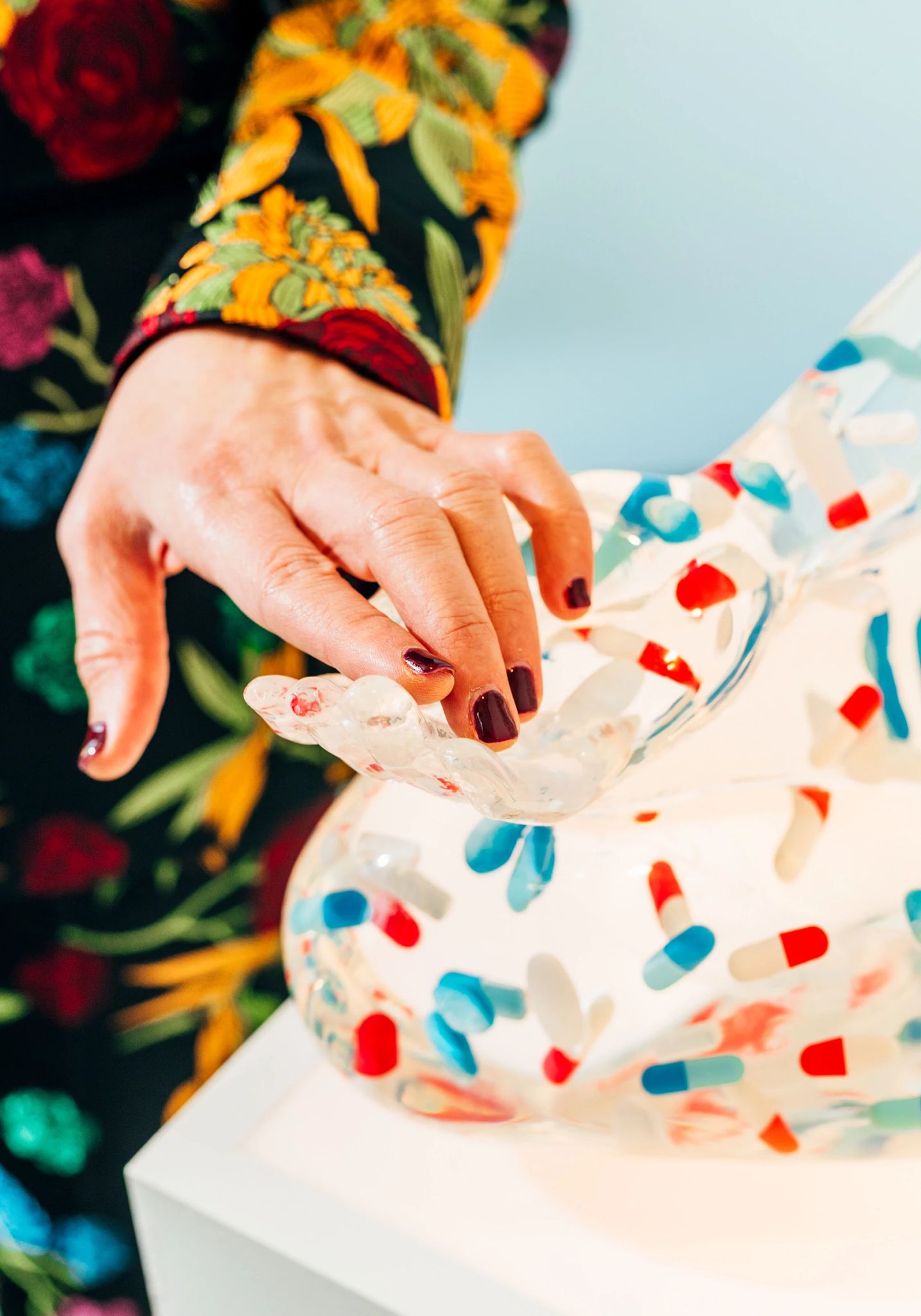AARP Hearing Center
She started singing in public when she was knee-high, but this month, multiplatinum folk artist Jewel, 50, made another kind of debut with “The Portal: An Art Experience by Jewel.” The singer’s exhibit, on display through July 28 at the Crystal Bridges Museum of American Art in Bentonville, Arkansas, explores the intersection of music, mental health, technology and art. “Art plays a really important role in our psyche,” says the musician, who cofounded the Inspiring Children Foundation to provide free mental health resources for families of all socioeconomic levels. She’s gearing up to head out on tour with Melissa Etheridge, with dates starting in July. AARP spoke to Jewel about what inspired her art, why she wants to help others and how she’s learning to listen to her own life advice.
This interview has been edited for length and clarity.
At your immersive art experience, people see a hologram of you and a drone show in the sky. Sounds psychedelic.
It’s organized around a personal philosophy of mine I call “the three realms.” We each travel through three realms of reality every day: our inner realm, which is our thoughts and our feelings; the seen realm, which is our families, jobs, the physical world; and the unseen realm, your spirituality, whatever makes you feel a sense of awe, inspiration and wonder. The whole experience uses art and music to help people understand and navigate their three realms. The idea is that mental wellness is a side effect of these three realms working in harmony, and mental conflict is these three realms being in conflict. I think behavioral health is a natural tie-in to art.


What inspired you to help others with their mental wellness?
I always knew I was here to help people. Not because I thought I was some big talent to be a gift to the world. I just knew it was my job to pitch in and make my community better. Having mental health struggles is very hard. Navigating the mental health system and the medical system is almost impossible. Navigating those things in poverty, it’s insurmountable. I suffered when I was younger and found solutions. Creating tools and affordable access to those tools to help others became a real mission for me in my life.
How did you suffer as a teen?
I moved out [of an abusive home] at 15. I worked hard to get myself through school. After I graduated, I had a boss who propositioned me. When I turned him down, he wouldn’t give me my paycheck. I couldn’t pay my rent. I was like, “Fine. I’ll live in my car. I’ll figure it out.” Until my car got stolen and I was on the street. I was reduced to being an animal.






























































You Might Also Like
Bobby Cannavale: ‘Try to Lead With Compassion’
The actor talks health, his guilty pleasure, how he’s raising his kids and the key that finally helped him quit smoking
The Always Authentic Diane Lane Takes Fame at Her Own Pace
Actress shares how she skips the drama, regrets nothing and why being single is okay
Michael McDonald Reveals the Stories Behind the Music
Singer’s new memoir shares candid details of his time with Steely Dan and the Doobie Brothers
Recommended for You